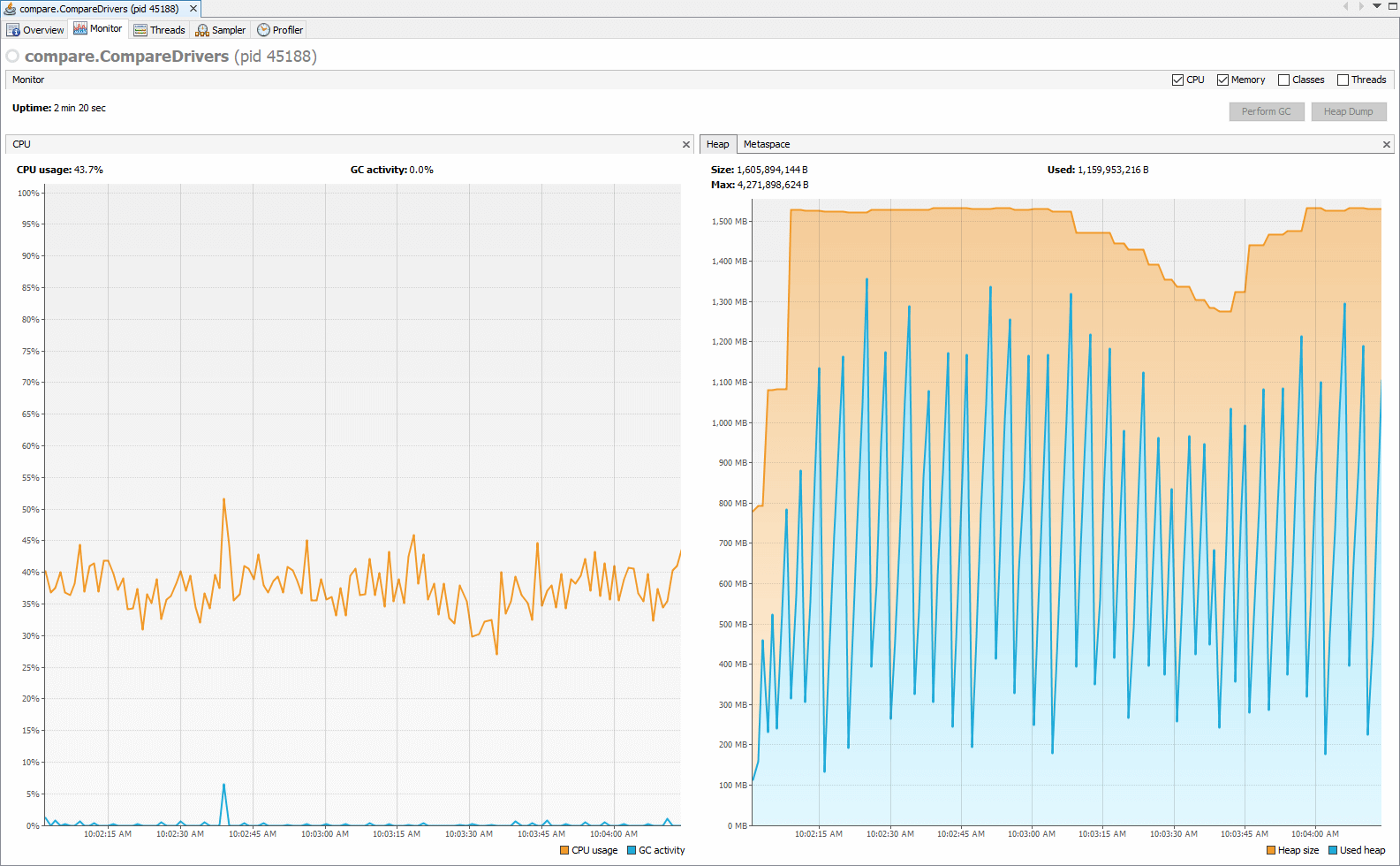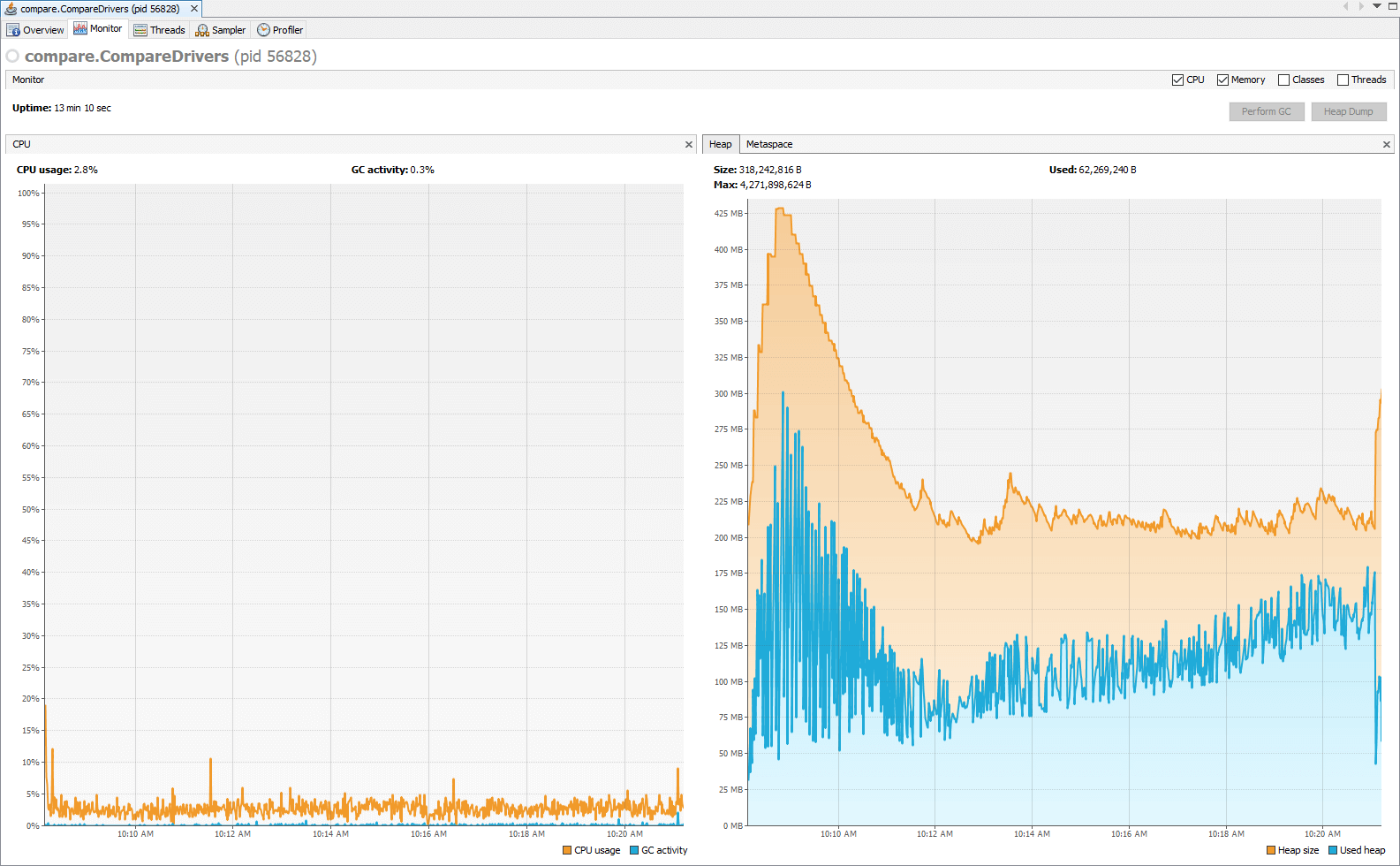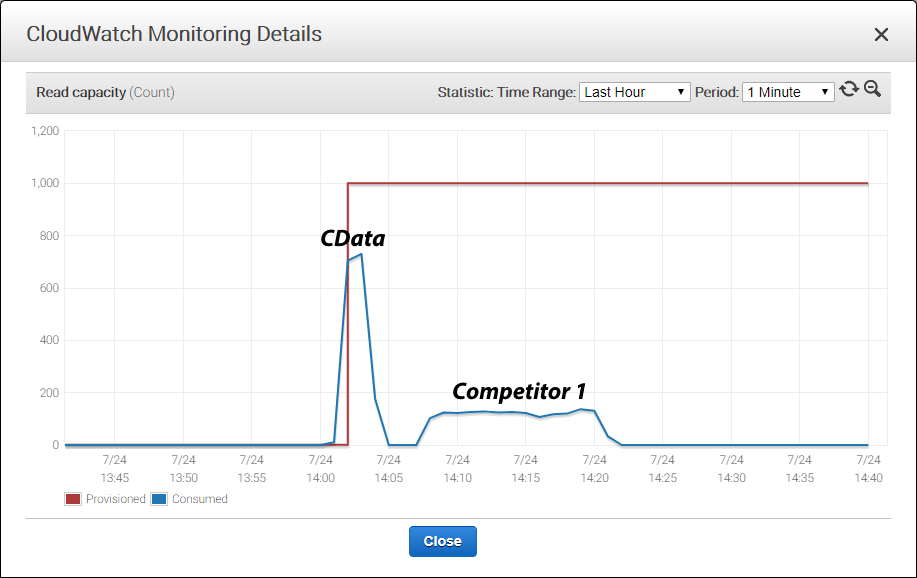Discover how a bimodal integration strategy can address the major data management challenges facing your organization today.
Get the Report →High Performance Drivers and Use Cases for AWS DynamoDB

As an Amazon Web Services (AWS) offering, Amazon DynamoDB has access to many server-side resources. With cloud computing, organizations can configure their AWS account to allocate storage and compute resources for their DynamoDB instances as needed. If your client applications and connections aren't keeping up with the resources your organization has provisioned, you won't be able to make the most of your cloud investment. CData Drivers can be configured to leverage your organization's configured AWS resources to maximize client-side performance.
In this post, we briefly compare the performance of CData Amazon DynamoDB Drivers to that of competitor drivers and include a link to a more in-depth comparison article with detailed data
What is Amazon DynamoDB?
Amazon DynamoDB is a fully managed NoSQL database service that provides fast and predictable performance with seamless scalability. DynamoDB provides a dynamic, scalable database without worrying about hardware provisioning, setup and configuration, replication, software patching, or cluster scaling. Amazon DynamoDB Driver Performance
Compare CData Amazon DynamoDB Drivers with competitors
We compared the CData Amazon DynamoDB JDBC Driver to a competitor’s product to find out how each fared in read performance and client-side resource usage. We also compared the Amazon DynamoDB CloudWatch metrics for both, measuring how much of the allocated Read Units the drivers were consuming. The results are outlined below. You can read the full results in our knowledge base article linked at the bottom.
Read performance
The CData JDBC Driver read large datasets from DynamoDB over 5.5x faster than the competitor driver.
| JDBC Query Times by Company (in seconds) | ||
|---|---|---|
| Rows Queried | CData Software | Competitor |
| ~10,000,000 | 139.83 (+462.4%) | 786.37 |
JDBC client resources
When we provision a high read capacity (1,000 read units) on the DynamoDB instance, the differences in how each driver utilizes available client-side resources are stark. Based on the graph, the CData Driver maintains a higher client-side resource usage but does so for a significantly shorter amount of time than the competitor driver.
CData Driver

Competitor Driver*

* Note the change in scale for the Heap graph.
Read capacity consumption
Based on the graph, we can see that the CData Driver makes significantly better use of the provisioned read capacity, utilizing around 70% of the available read capacity units. Meanwhile, the competitor driver uses less than 20% of the available read capacity (despite being configured in the JDBC URL to use 100%).
DynamoDB CloudWatch Metrics

For more information, including a full description of the data queried, read the full comparison article in our Knowledge Base.
Advantages of Amazon DynamoDB
- Scalability: Amazon DynamoDB is designed to scale horizontally, meaning it can flexibly handle increasing amounts of data by adding more nodes to the system.
- Read performance: DynamoDB offers single-digit millisecond latency for both read and write operations by distributing data across multiple servers and using SSD storage.
- Fully managed service: As a fully managed service, DynamoDB takes care of administrative tasks such as hardware provisioning, setup, configuration, and maintenance. This allows developers to focus on building applications rather than managing infrastructure.
- Automatic replication and multi-AZ deployments: DynamoDB automatically replicates data across multiple Availability Zones (AZs) within a region, providing high availability and fault tolerance. In the event of a server or data center failure, the system seamlessly switches to a standby replica, minimizing downtime and ensuring data durability.
- Security: DynamoDB provides robust security features, including encryption at rest and in transit, access control with AWS Identity and Access Management (IAM), and VPC (Virtual Private Cloud) endpoint support.
- NoSQL data model: DynamoDB is a NoSQL database, allowing for flexible schema designs. This is particularly beneficial in scenarios where the data model evolves, as developers can add or remove attributes without affecting the entire database schema.
- Global Tables for multi-region replication: Amazon DynamoDB Global Tables enable automatic, multi-region replication of tables, providing low-latency access to data for globally distributed applications.
- Backup and restore functionality: DynamoDB offers automated and on-demand backup capabilities, allowing developers to create full backups of their tables for long-term retention or to restore data in case of accidental deletion or corruption.
- Integrated caching: For applications requiring even lower-latency access to data, DynamoDB integrates with DynamoDB Accelerator (DAX), an in-memory caching service. DAX helps improve response times for read-intensive workloads.
- Flexible indexing: DynamoDB supports the creation of Global Secondary Indexes (GSIs), enabling efficient querying on non-primary key attributes. This flexibility in indexing allows for diverse query patterns and enhances the database's query performance.
The CData difference
At CData Software, we provide high-performance data drivers for a variety of data sources, including Amazon DynamoDB. Since we specialize in drivers, we are able to invest in fine-tuning and optimizing our drivers to offer the industry's fastest connectivity. Our drivers provide faster read access from DynamoDB by optimizing the use of client-side resources like CPU utilization and network usage and making better use of the configurable resources in DynamoDB.
Thanks to the CData Driverscom, DynamoDB users can connect to live DynamoDB data faster than with any other connector. This speed enables ad-hoc querying of DynamoDB data, saves users money (by reducing the amount of time required for high resource allocation), and enables responsive reporting, dashboards, and more.
Check out our DynamoDB page for more information on our drivers for DynamoDB, including popular integrations. Download a free, 30-day trial of any of our drivers to see the CData difference for yourself.






